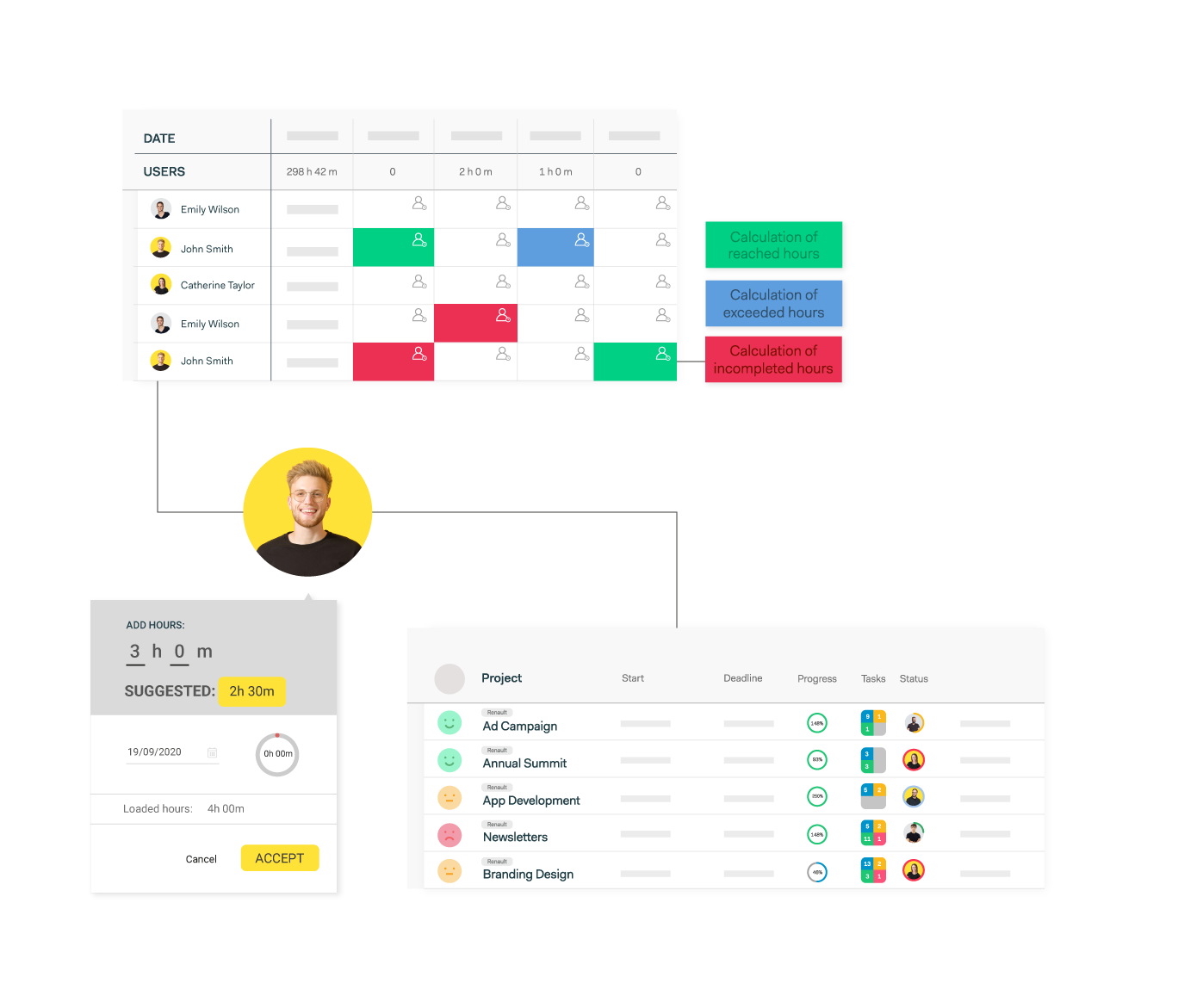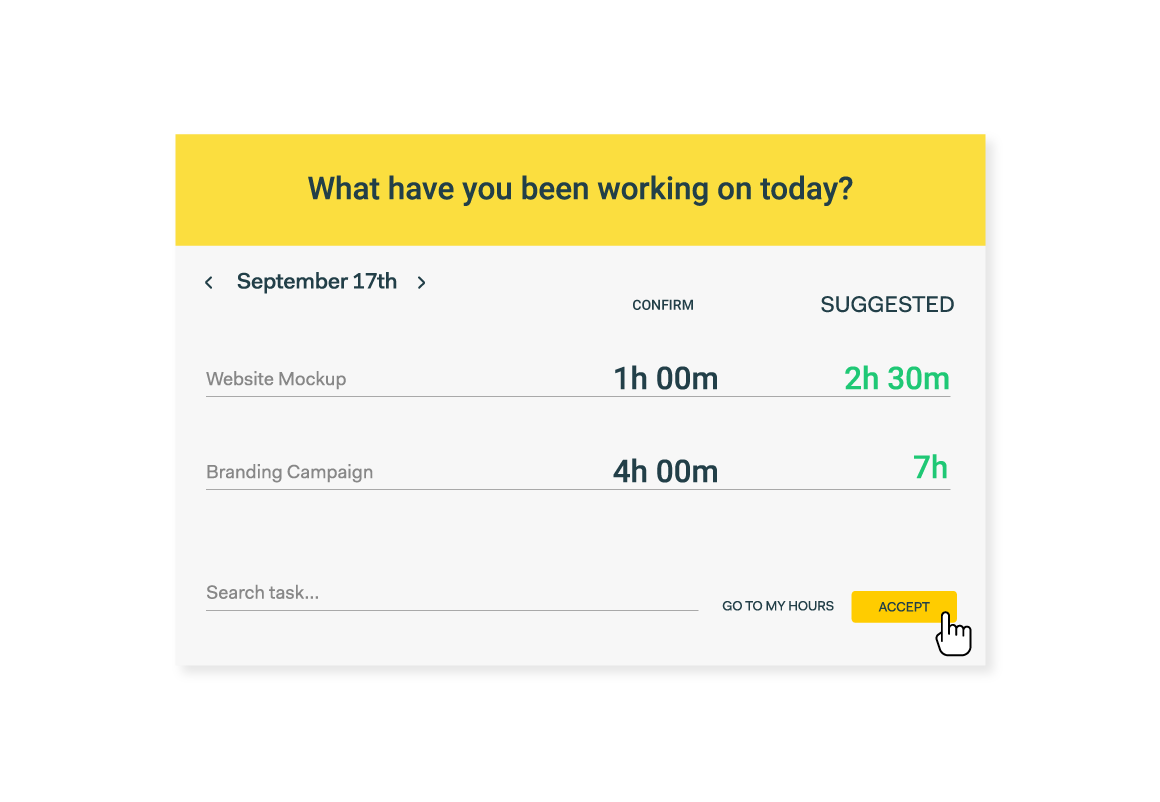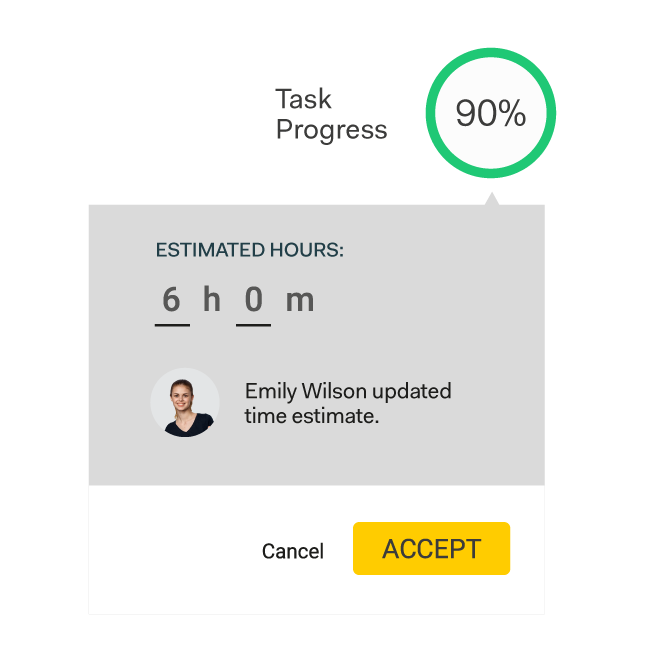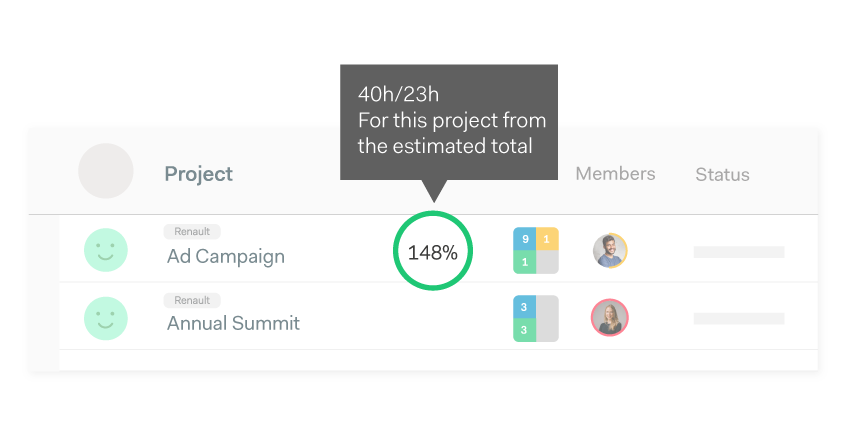
Enhance your time management skills with real-time automatic tracking and make Punctuality a Differential.
Real-time tracking made easy.
COR’s time tracking tool automatically counts the interaction of each user with the platform, delivering a suggestion of hours spent on each task.
With just one click, you can also track the suggested hours.


Optimize your time management resources with an effective estimation of the number of hours spent on each type of deliverable.
COR is more than a simple employee time tracking software, it’s a project tracking software: its AI understands the interactions of each user with the tool, developing a pattern that estimates and suggests the number of hours that will be required to complete the tasks. Allowing for a deeper understanding of your business’s billable hours.
A time tracking software that assertively predicts the time each project will take, and how it will affect its overall profit.
COR’s time tracker generates hour estimations which, in tandem, allows you to understand how much time it will take your team to execute a project in its entirety. With this information, our software creates a profit forecast so you can negotiate better fees and detect the most profitable services offered.
This will prevent losses due to miscalculated budgeting, and enable you to avoid taking on projects that will make no real revenue.

Our Clients say





Our Integrations
Frequently Asked Questions
Time management is a method of organizing and planning how to best divide and invest your time between different activities and tasks. The goal of a great time management effort is to work smarter, not harder. The second purpose is to get every planned task done in time, even within a tight schedule.
The key aspect of Time Management for leaders and PMs is planning and scheduling according to a team’s available time, and helping them handle the number of hours they spend on specific tasks in order to work more efficiently. Effective time management may come organically to some people, but even if some collaborators aren’t as naturally gifted, they can still develop habits to improve their time management skills. This is why knowing how time is spent internally within tasks and teams is a must for people looking into streamlining their operations. The first step toward better time management is having data regarding how time is spent.
With poor time management and understanding, you can have a hard time producing quality work, reaching deadlines, managing stress levels, and keeping up your professional reputation. Improving your time management skills can lead to a bigger profit margin for your business by building a more secure and trustworthy workspace for your employees, thus yielding better production times.
Time is one of the most valuable assets a business has, and within a big operation, it can be easy to lose billable hours in between projects. Lost time can also be a warning sign of a maladaptive work structure. Knowing how time is employed can be the key to streamlining the less profitable areas of a company, and creating a map of future talent investment for the company: What services are not cost-effective? Why? Do employees need further training to solve issues faster? Is it more sensible to out-source a specific task?
Knowing how time is employed will grant you a business diagnosis, the first step toward improving the way your operation works.
1. Understand your current time management situation
When planning and scheduling it is necessary to know how many hours each task requires, in order to set an appropriate deadline structure. PMs and team leaders are not experts in every field, and due to the interdisciplinary nature of some projects, they may require to allocate tasks they never tackle themselves. Without knowing they could misjudge the hours a task will take, and lead to bottlenecks or impossible deadlines down the line.Having an approximate idea of the hours a team member will have to dedicate to a task will grant PMs a step in the right direction from the get-go.
2. Prioritize Tasks and keep dependencies in clear sight.
It’s essential to have an accurate idea of which tasks are the most urgent and important, and how those tasks interact with the project as a whole. Asking the pertinent team to get involved in the importance designation can be extremely beneficial for a project, this works on two levels:
- The talent can have a clear idea of what is expected from them and can take charge of designing a schedule for themselves.
- Letting them understand what are the task dependencies and interaction with one another can help break down information silos and ground them in the project as a whole, and not just their tasks.
3. Available time, burnout, and production.
Well-rested and healthy employees work harder and are capable of greater creativity than oversaturated talent. The hours dedicated to a task can increase when a team member is stressed and stretched thin between a myriad of tasks. In order to keep employees within a healthy schedule, it’s necessary to know how much they already have on their plate, so whenever a leader or PM allocates tasks they can easily know if a team member has the available time for it.
4. Automation
Managing multiple tasks at the same time can not only be difficult, but it can also lead to several human errors that will eat away at deadlines and productivity. Automating dependencies, having the content of tasks and their progress constantly updated, and accessing a reliable and transparent view, are achievable goals that can be beneficial to the whole business.
Templates, updated schedules, and time-tracking features. These can go a long way to minimize lost time.
Time is one of the most valuable assets a business has, and within a big operation, it can be easy to lose billable hours in between projects. Lost time can also be a warning sign of a maladaptive work structure. Knowing how time is employed can be the key to streamlining the less profitable areas of a company, and creating a map of future talent investment for the company: What services are not cost-effective? Why? Do employees need further training to solve issues faster? Is it more sensible to out-source a specific task?
Knowing how time is employed will grant you a business diagnosis, the first step toward improving the way your operation works.
More About Time Tracking
How Does Time Tracking Make your Agency More Profitable?

Tracking Hours: A Task for the Creative?

Why Time Tracking is Important for a Professional Services Business


